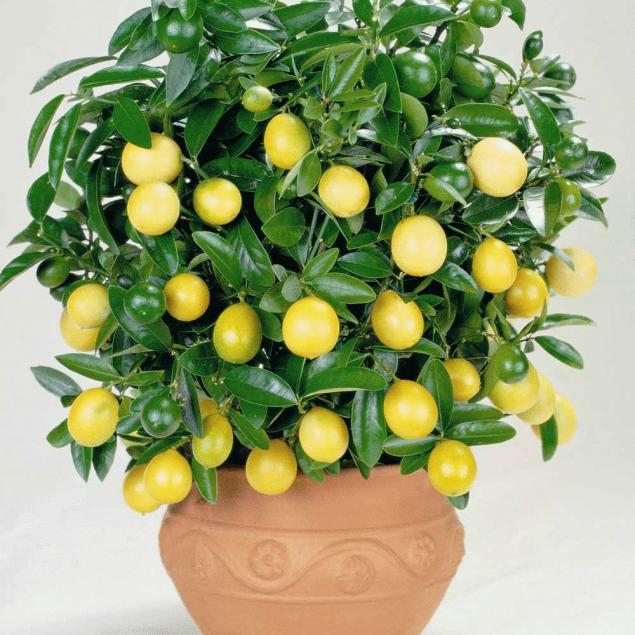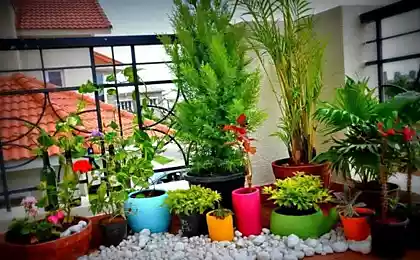496
Plants that clean the air
If you want the air in your home clean and healthy, pay attention to indoor plants that absorb harmful and poisonous substances. Kalanchoe, ivy, zonal geranium, Laurel, lemon.

These and other plants are not only pleasing to the eye, but also act on the pathogens and heal the atmosphere in the room. Best natural air purifiers in the house: Chlorophytum. Absorb from the air carbon monoxide, formaldehyde, benzene, ethylbenzene, toluene, xylene. Significantly reduces the colony of micro-organisms and the air. Particularly active against mould fungus. For children's room and kitchen — great cleaner! For greater effect you can put in pots a few tablets of activated charcoal. Dieffenbachia is especially useful for residents of apartments near the contaminated exhaust gases of automobile highways.

Cleans the air of toxins, which allocates road transport. Absorbs formaldehyde, xylene, trichloroethylene, benzene. But dieffenbachia is better not to keep in apartments where there are children — the juice of this plant is very poisonous, once even a small scratch can cause serious burns and ulcers. Dracaena absorbs from the air the benzene, xylene, trichloroethylene and formaldehyde. Cansev eriya (pike tail, Teschin language) absorbs from the air benzene, formaldehyde, trichloroethylene.

Spathiphyllum absorbs from the air benzene, formaldehyde, phenol, toluene. Al improves the indoor climate, absorbs formaldehyde, 3.5% reduces the number of microorganisms in the air. Though weak, but acting on the pathogenic microorganisms. Only one plant of ficus Benjamin in a room of 20-25 square meters per day reduces by 50% formaldehyde content. These properties are of Chlorophytum of Holsti and Kalanchoe Degremona.

By the way, a very sensitive indicator of air pollution is considered to be the begonia, the leaves of which are damaged even at low concentrations of formaldehyde released plastic "lining", linoleum, synthetic carpeting, laminated furniture, plywood and particleboard etc.
Source: /users/117

These and other plants are not only pleasing to the eye, but also act on the pathogens and heal the atmosphere in the room. Best natural air purifiers in the house: Chlorophytum. Absorb from the air carbon monoxide, formaldehyde, benzene, ethylbenzene, toluene, xylene. Significantly reduces the colony of micro-organisms and the air. Particularly active against mould fungus. For children's room and kitchen — great cleaner! For greater effect you can put in pots a few tablets of activated charcoal. Dieffenbachia is especially useful for residents of apartments near the contaminated exhaust gases of automobile highways.

Cleans the air of toxins, which allocates road transport. Absorbs formaldehyde, xylene, trichloroethylene, benzene. But dieffenbachia is better not to keep in apartments where there are children — the juice of this plant is very poisonous, once even a small scratch can cause serious burns and ulcers. Dracaena absorbs from the air the benzene, xylene, trichloroethylene and formaldehyde. Cansev eriya (pike tail, Teschin language) absorbs from the air benzene, formaldehyde, trichloroethylene.

Spathiphyllum absorbs from the air benzene, formaldehyde, phenol, toluene. Al improves the indoor climate, absorbs formaldehyde, 3.5% reduces the number of microorganisms in the air. Though weak, but acting on the pathogenic microorganisms. Only one plant of ficus Benjamin in a room of 20-25 square meters per day reduces by 50% formaldehyde content. These properties are of Chlorophytum of Holsti and Kalanchoe Degremona.

By the way, a very sensitive indicator of air pollution is considered to be the begonia, the leaves of which are damaged even at low concentrations of formaldehyde released plastic "lining", linoleum, synthetic carpeting, laminated furniture, plywood and particleboard etc.
Source: /users/117























